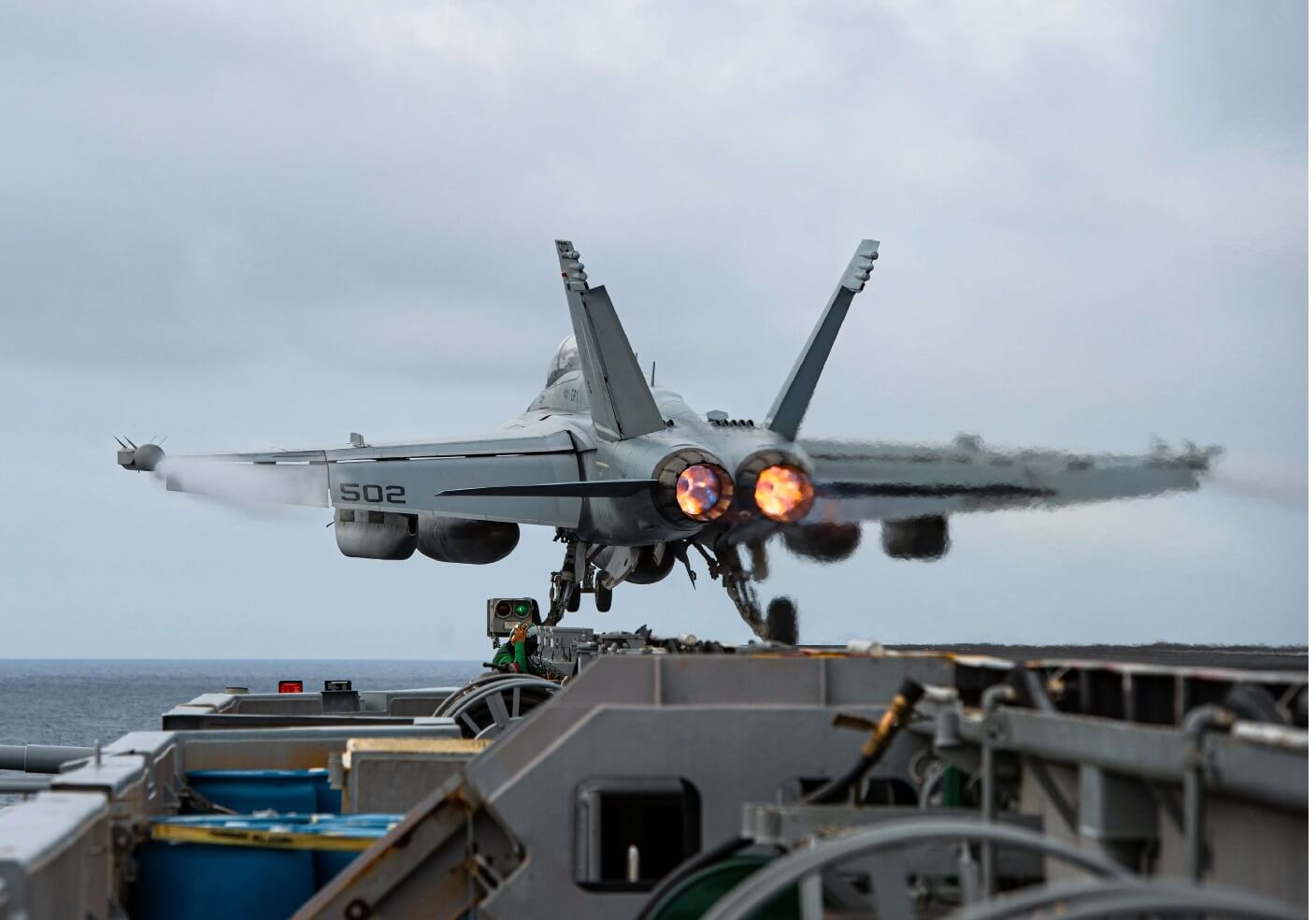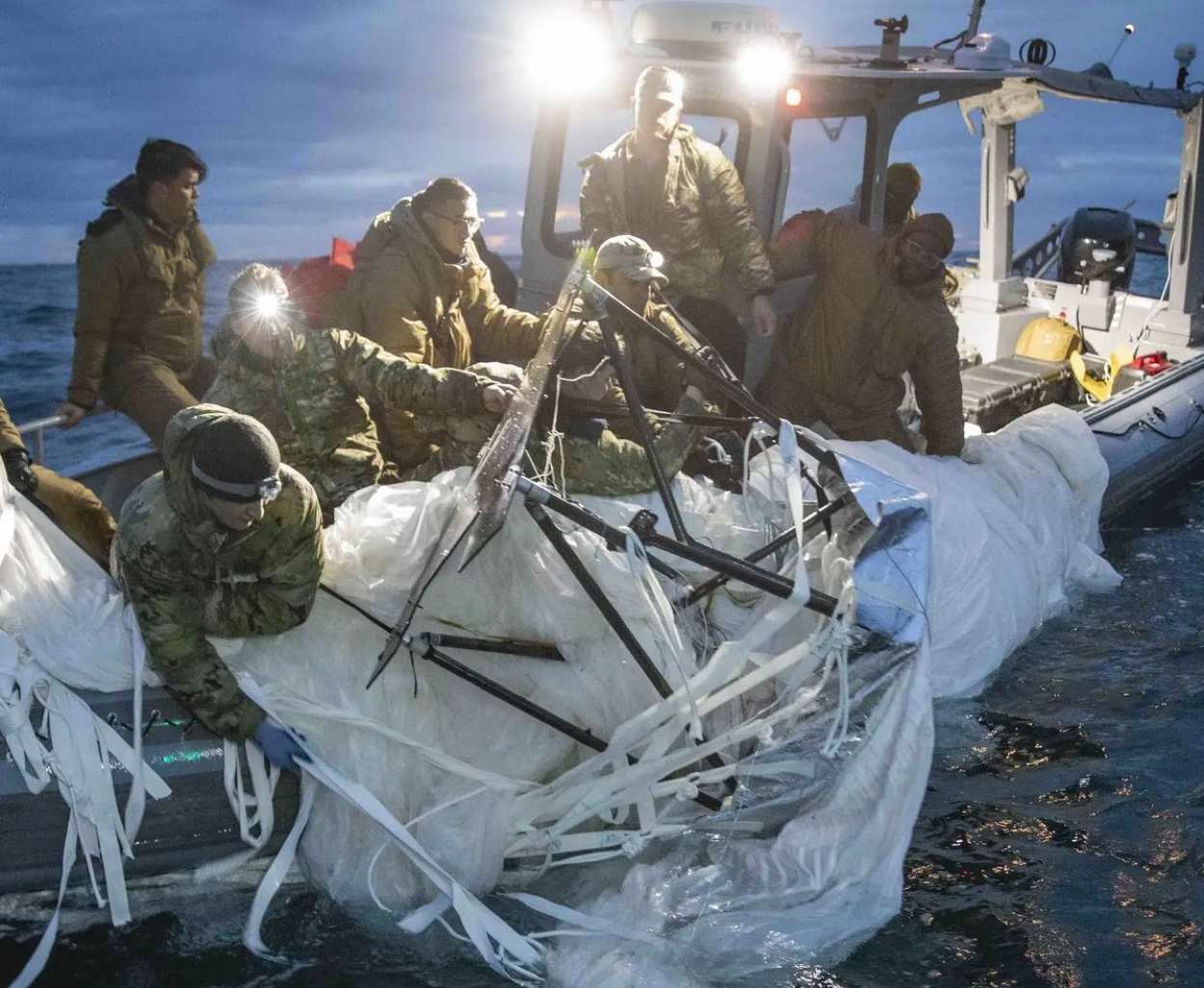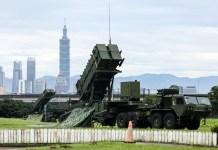The US Navy and Marines are conducting joint drills in China’s backyard, the South China Sea, while the US Air Force is preoccupied with shooting down suspected Chinese spy balloons above North American airspace.
On February 12, the Japan-based 7th Fleet announced that the USS Nimitz aircraft carrier strike group and the 13th Marine Expeditionary Unit have been carrying out the “integrated expeditionary strike force (ESF) operations in the South China Sea.”
In a statement, the 7th Fleet mentioned exercises involving ships, ground troops, and aircraft on February 11. According to the 7th Fleet, the joint operation has established a strong presence in the area, supporting peace and stability.
The statement described that they support a wide range of missions as a ready response force, including landing Marines ashore, providing aid in times of need, and deterring potential adversaries via demonstrative combat power.
The Nimitz ESF’s capacity to operate smoothly and simultaneously on the water, on land, and in the air exemplifies the special significance of the amphibious capability offered by the Makin Island ARG and 13th Marine Expeditionary Unit, the statement reads.

The statement did not disclose when the joint drills had begun or when they would end. That being said, the latest exercise could be seen as a show of strength against Beijing and steadfast support for partners in the region.
China asserts almost complete sovereignty over the South China Sea and vigorously opposes any military activity by other countries in the disputed sea, through which $5 trillion worth of cargo is transported annually.
The US believes that overflight and navigational freedoms must be protected in the South China Sea. Thus, it sends ships sailing past reinforced Chinese outposts in the Spratly Islands many times a year, eliciting complaints from Beijing.
Besides that, Washington is strengthening its defense and security partnership with the Philippines. The Chinese coast guard and supposedly civilian but government-backed boats have encroached on islands and fisheries, which has alarmed Manila.
The Balloon Saga Deflates Attempts To Improve US-China Relations
The exercise takes place when already-heightened relations between the US and China have worsened by a diplomatic spat prompted by the presence of the alleged Chinese spy balloon in US airspace.
Furthermore, concerns about North American security have been raised in the wake of the shooting down of a massive Chinese balloon off the US coast on February 4.
According to the US, the suspected Chinese spy balloon, shot down by a USAF F-22 Raptor on February 4, was outfitted to recognize and gather intelligence signals. However, Beijing argues that the airship had veered off course while conducting weather research.
Then, on February 10, a USAF F-22 fighter jet again shot down another object off the coast of northern Alaska, according to the Pentagon. According to officials, it lacked any propulsion or control systems.
On February 11, a US F-22 jet gunned down a “high-altitude airborne object” over Canada’s central Yukon region under US and Canadian orders, roughly 100 miles (160 km) from the US border, stating it threatened civilian flight.
The military has not confirmed the nature of the objects, but Senate Majority Leader Chuck Schumer declared on Sunday that they were also balloons, albeit smaller than the first one.
Schumer linked those unidentified objects to China. The latest in a spate of such instances, another high-altitude object was taken down by the USAF F-16 Fighting Falcon fighter jet on February 12 above Lake Huron in Michigan.
Nevertheless, in response to the first balloon incident, Secretary of State Antony Blinken hastily postponed a crucial trip to Beijing meant to ease tensions.
On the other hand, China has stepped up its criticism, calling the US shootdown an overreaction and a breach of international rules after initially expressing regret over the balloon.

When Lloyd Austin, the defense secretary of the United States, called to discuss the situation, China’s Defense Minister declined to talk. Since then, as part of its retaliation for the event, the United States has blocked six Chinese organizations it claims are connected to Beijing’s aerospace activities.
Additionally, China was denounced by the House of Representatives in a unanimous vote for its “brazen violation” of US sovereignty and attempt to “deceive the international community through false claims about its intelligence collection campaigns.”
According to the Pentagon, the balloon was part of an extensive surveillance program China has been carrying out for a while.
The US believes Chinese balloons have recently floated over dozens of nations on five continents. It discovered more about the balloon program after constantly monitoring the balloon brought down in South Carolina.
- Contact the author at ashishmichel(at)gmail.com
- Follow EurAsian Times on Google News




